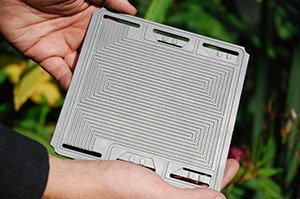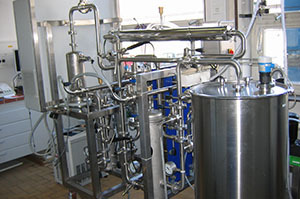


The protection of water resources and the reduction of all wastewater emissions require a closed-loop cycle for (process) water streams or an effective treatment of the wastewater. The problem with industrial and other water streams is the accumulation of impurities which need to be removed. In this project, an electrochemical process is being developed which mineralizes organic substances to a great extent. Especially non-biodegradable compounds, toxic ingredients and endocrine disruptors can be eliminated with this method. Being strong oxidizing agents, the OH radicals used can completely mineralize these substance classes.
Within the project scope it is intended to promote the mineralization of hard-to-treat organic contaminants such as aliphatic compounds, active substances and x-ray contrast agents in wastewater by using a combination of in situ reactions with hydrogen peroxide (H2O2) and OH radicals in a novel electrochemical cell with a boron-doped diamond electrode (BDD) as anode and a gas diffusion electrode (GDE) as cathode. Strong oxidizing agents are formed on the anode (OH radicals) as well as on the cathode (H2O2). This new combination generates additional oxidation reactions that increase the electrochemical yield and improve the overall degradation efficiency of water purification.
The implementation of the new process on a technical scale requires the following research and development work:


Andreas Bulan
Covestro Deutschland AG
51365 Leverkusen
Technische Universität Clausthal
Clausthaler Umwelttechnik-Institut GmbH (CUTEC)
Associated partners:
Eilenburger Elektrolyse- und Umwelttechnik GmbH
Photo credits: oben ©Eisenhuth GmbH und Co. KG, unten v.l. ©Dechema-Forschungsinstitut, ©Covestro
Deutschland AG